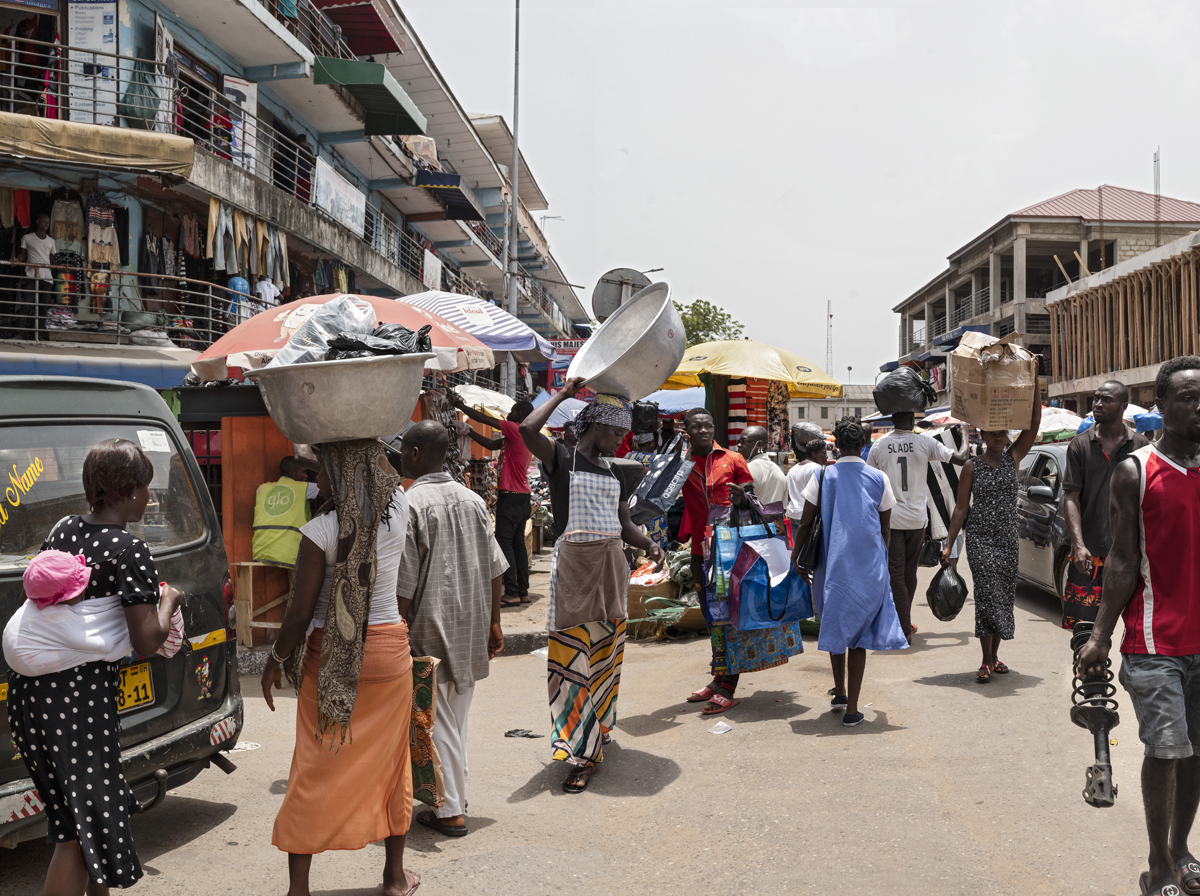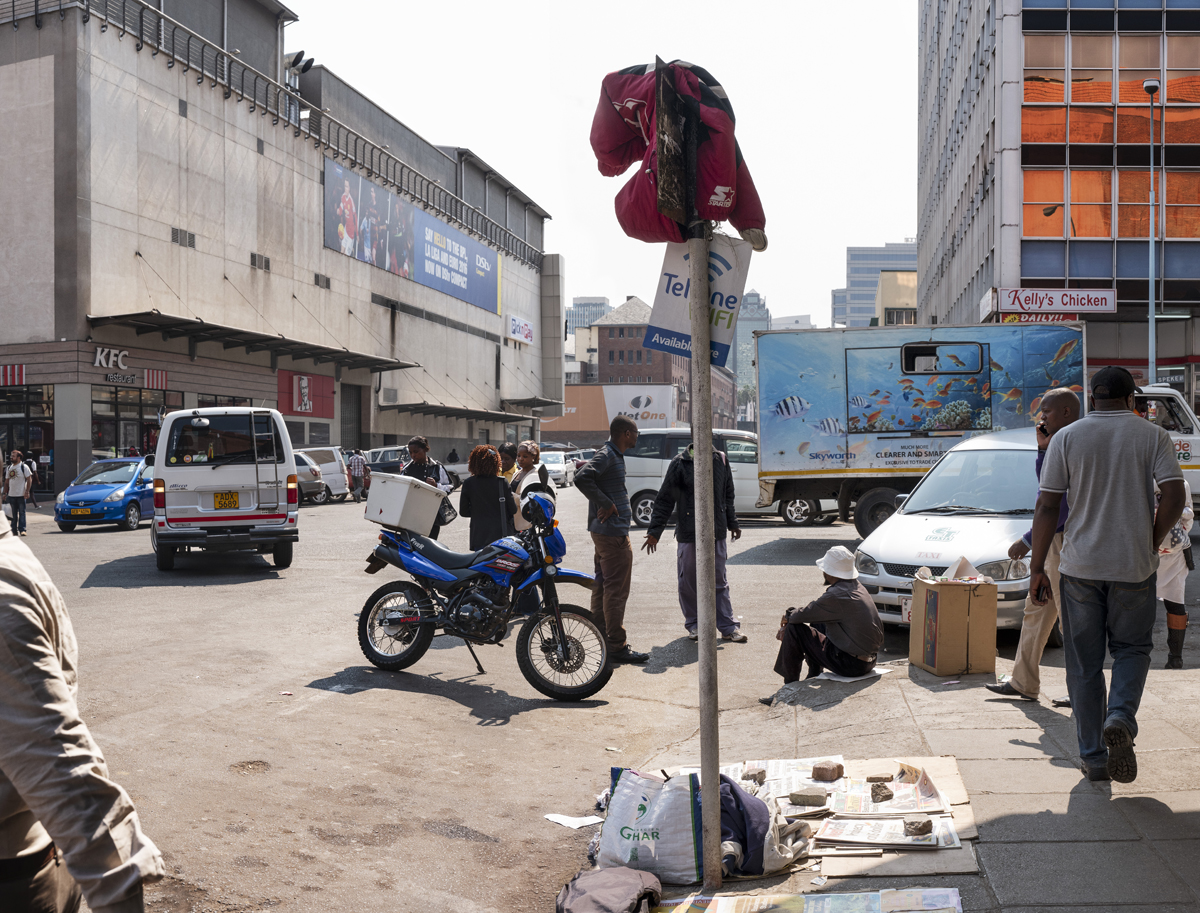Born in Johannesburg, Guy Tillim worked as a freelance photographer for news platforms including Reuters and Agence France Presse between the late 1980s and early 1990s. He was also a member of the Afrapix collective until its close in 1990. Disillusioned by the photojournalistic gaze that came with this work – in which news images of unfolding events, such as the end of apartheid in South Africa, were presented without context or critique – Tillim shifted his attention to the urban landscape as a site to examine the transformation of life (urban, civic, political, social) from a different perspective.
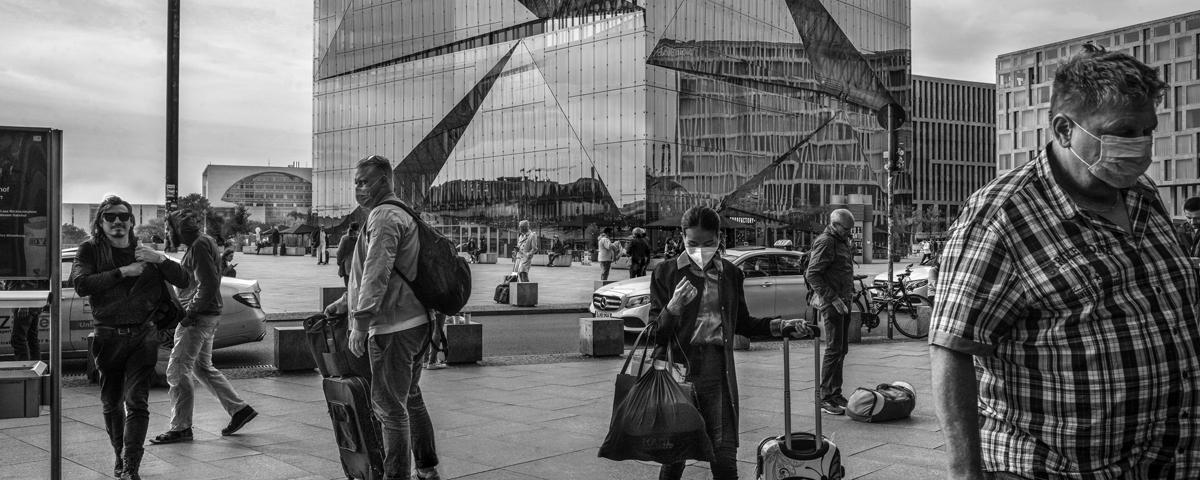
In the series Jo’burg (2004), for example, the photographer looks at the city he grew up in in the early 2000s – a time of transformation and flux rendered in views of apartment interiors in various states of decay. In a later series on the city, Joburg: Points of View (2014), Tillim turns his attention to the city’s streetscapes, presented as a series of diptychs stitched together by the photographer. The differences between the two Johannesburg series reflect the photographer’s ongoing dialogue with how photography and images are negotiated.
Most recently, the photographer exhibited a collection of work made between 2007 and 2022. In The Street That You’re On, The Same On You Know (at the Stevenson Gallery in Johannesburg, May – June 2023), Tillim revisits many of the cities that have appeared in previous work, including Accra, Dakar, Harare, Berlin and São Paolo. Explaining the premise of the show over email, Tillim says that he “made many diptychs of street scenes in these cities, perhaps to encompass more of the vista, or maybe just for a change in point of view […] Recently, I revisited the images and started stitching them together and they took on a new life, conveyed the thing I wanted to say in the first place. So here we are with an exhibition of these images.”
In Avenue Patrice Lumumba (2007-8), Tillim captures the streets and public spaces in cities across the continent, including countries such as Congo, Mozambique, Madagascar, Angola and Ghana. Here, we see the hangovers of colonialism through images of late-twentieth century buildings: the ideals that underpinned their construction have faded, but they linger as ghostly architectural relics, coexisting with the new aspirations and ideas of postcolonial landscapes. Later, in the series Museum of the Revolution (2014 – 2018), the photographer again photographs streets in cities across Africa. As Tillim explains below, the series examines the naming and remaining of streets in the process of de-colonisation, as different politics have emerged, taken hold, and been supplanted in the aftermath of the post-colonial fallout.
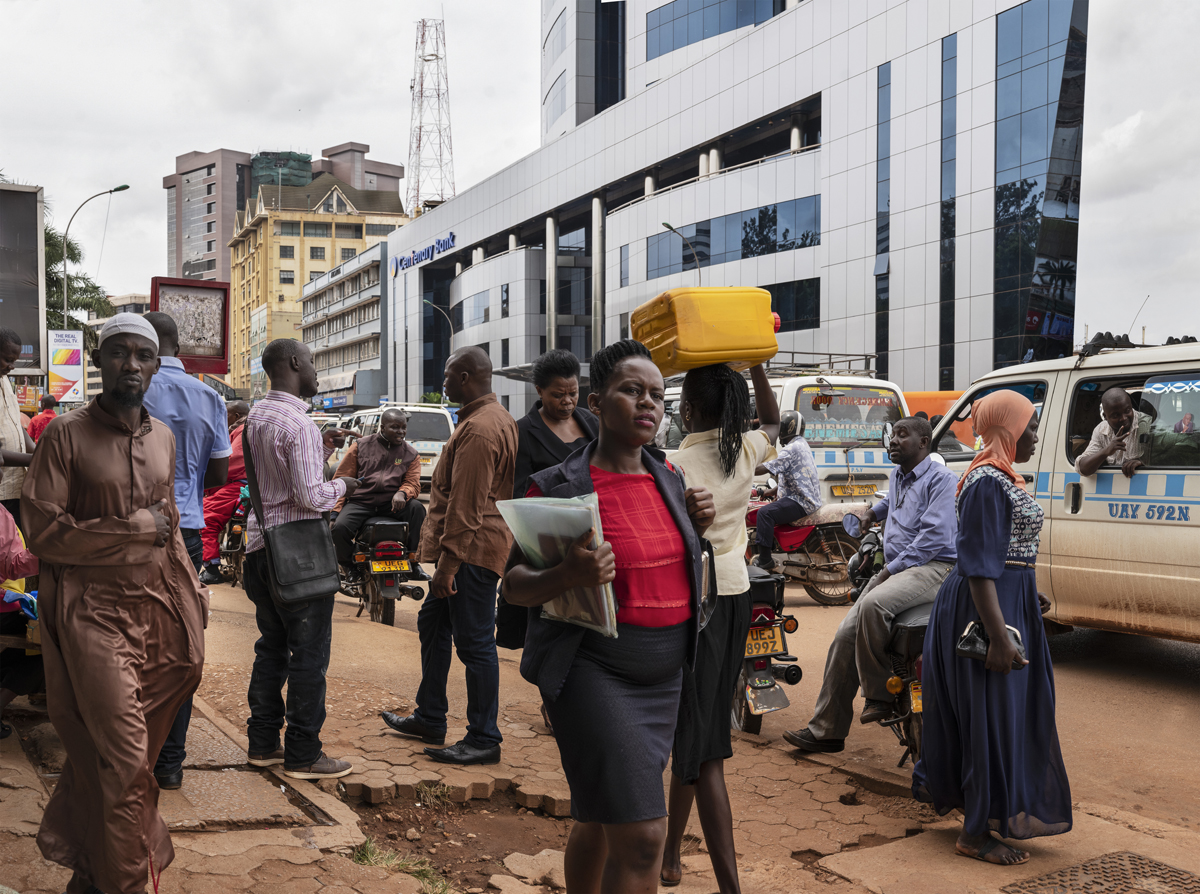
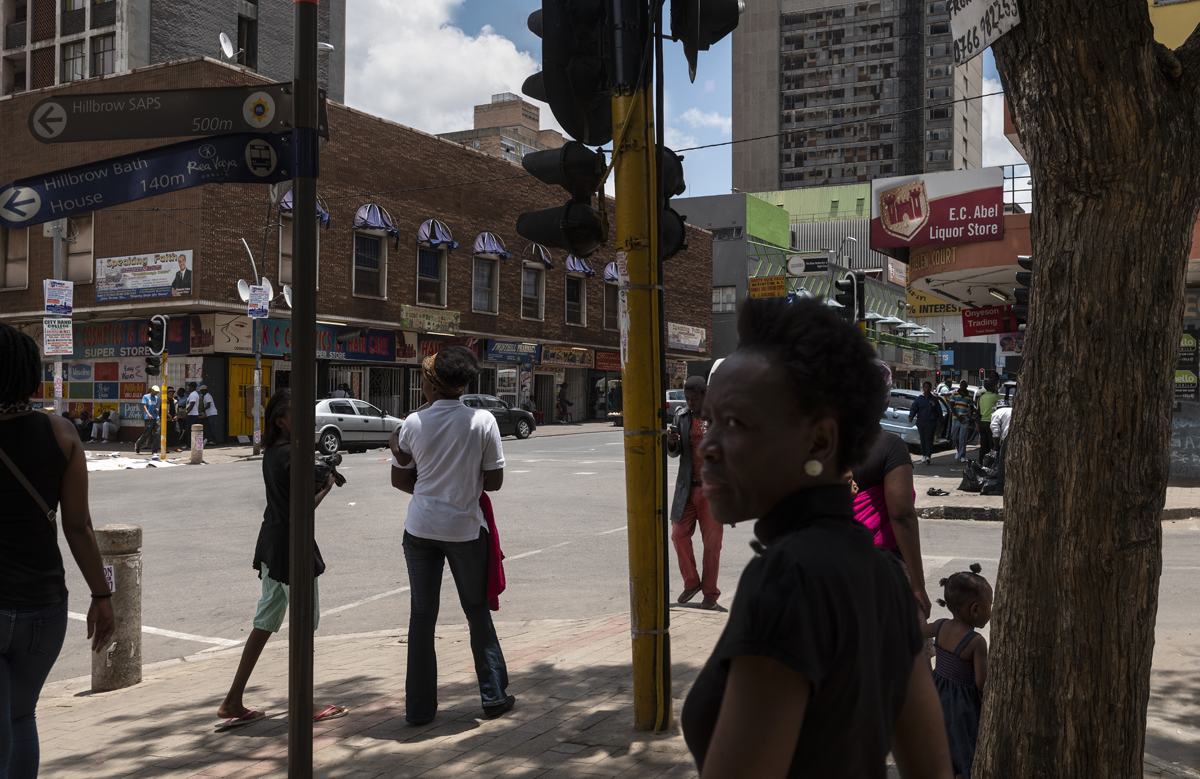
Between about 2015 and 2019 I was working in the streets of various African capitals taking pictures that were eventually published in a book called Museum of the Revolution. My interest in the streets came from photographing events in the 1980s and ‘90s. The streets, named and renamed, seemed to me to function as silent witnesses to the ebb and flow of political, economic and social shifts of power that have taken place in African countries over the past 65 years: from colonial to postcolonial regimes that in many cases embraced socialist policies, and then from African Nationalist to global capitalist states. The decaying buildings had complex political reasons for being so, and I was concerned that a certain kind of depiction of decay was a simplistic visual metaphor for an African political condition of a certain era. I wanted to avoid that because my attraction to the buildings was of a different order: the overthrow of colonial regimes, with the pathos of failed expectations that went with it. I imagined an exciting future, of being young in a place that was becoming something new.
The photographic reportage emanating from Africa in the 1980’s and 1990’s was fixated on the calamities of the post-colonial era and I was, in the way I portrayed the events, no exception. However, I couldn’t help but become increasingly spellbound by the landscape and the architecture of the cities, and at a certain point I lost interest in the events and focused instead on the surroundings.I found it liberating to approach an environment, overloaded with certitude about postcolonial narrative, with a neutrality that I hoped would convey a kind of ambiguity – an ambiguity that is illustrated well in the Museum of the Revolution in Maputo, Mozambique. There is a panoramic painting produced by North Korean artists depicting the liberation of the capital from Portuguese colonial rule. It illustrates the rhetoric of a revolution even as the leader and his followers parade through the streets and avenues laid out with grandeur by the colonial powers.
I think it reflects a fascination with visual language. Since I started taking pictures in the 1980s, visual vocabulary has evolved exponentially. An increasingly nuanced intention of the photographer is discernible outside of clumsy signifiers. We know that the verisimilitude of a photograph is a kind of hair-trigger: there’s a rush to meaning even though the intention of the photographer may be obscure. But the camera sees more than the eye, and is more dispassionate. I wanted my mind’s eye to be more like the lens.
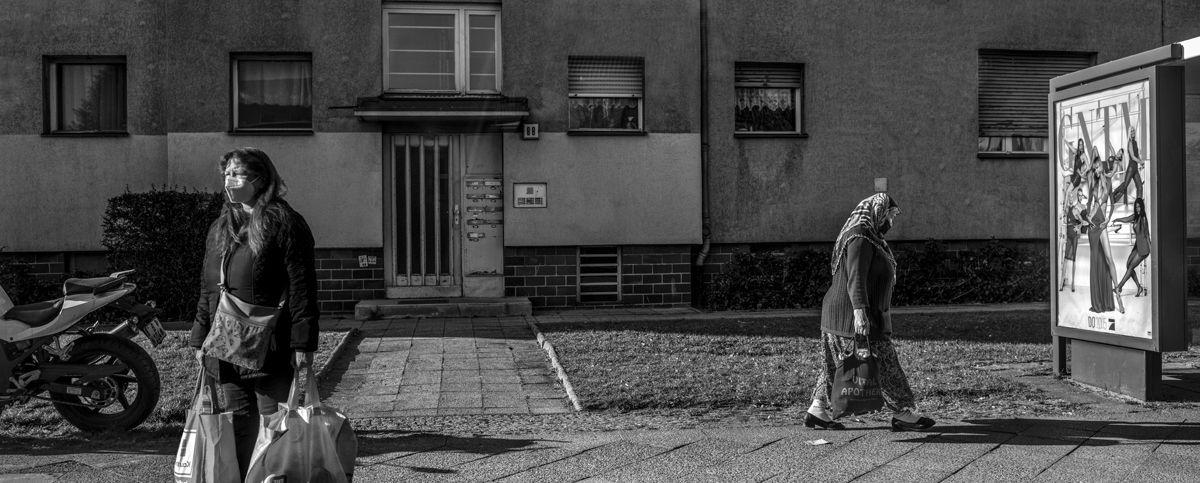
In Avenue Patrice Lumumba published in about 2007, I concentrated on the buildings themselves. They took on a fascinating shape and patina for me as they forged an indisputable African identity. History shows up on the outside of things. In Museum of the Revolution I tried to incorporate the movement of the street. The images that tease my eye are [those] where people seem to be in a dance [with] this elaborate environment.
History is reinvented by each generation, a succession of truth as much as power, and is the challenge to culture itself. Perhaps one of the greatest possibilities of photography is to provide a window onto a world or a scene, offer a landscape where nothing hides from an even gaze, yet is also arrestingly ambiguous, open to interpretation.
The gallery and photobook are interesting because in the larger spaces they carry the full burden of the work. One’s intention is writ clear, or not. In a magazine article or newspaper, of course, the images generally conform to the intentions of the editors.
